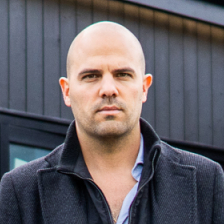In the ever-evolving landscape of healthcare, the design and development of medical facilities represent a critical intersection of form, function, and future-forward thinking. GC44, a general contractor in Palo Alto, has excelled in this realm, addressing the unique challenges and considerations that come with healthcare facility development.
Understanding the Unique Needs of Healthcare Facilities
Designing a healthcare facility goes beyond aesthetic appeal; it involves creating a space that promotes healing, accommodates advanced medical technologies, and ensures the safety and comfort of patients and staff. These spaces must be adaptable, allowing for future technological advancements and changes in medical practices.
Patient-Centered Design
Modern healthcare facility design puts patients at the forefront. This approach includes creating calming environments that reduce stress and anxiety, with considerations for privacy, noise control, and natural lighting. GC44 focuses on patient-centered design elements that have been shown to improve patient outcomes and satisfaction.
Integrating Advanced Technologies
As medical technology evolves, healthcare facilities must be designed to accommodate new equipment and procedures. This includes creating flexible spaces that can adapt to changing technology needs, as well as incorporating telemedicine capabilities for remote consultations and diagnostics.
Infection Control and Safety Measures
Infection control is a critical aspect of healthcare facility design. This involves selecting materials and designing layouts that minimize the risk of infection transmission. GC44 implements designs that facilitate easy cleaning and maintenance, use antimicrobial materials, and ensure proper air filtration systems are in place.
Navigating Regulatory Compliance and Sustainability
Adhering to Regulations
Healthcare facilities must comply with a myriad of regulations and standards. This includes building codes specific to healthcare, ADA requirements, and fire safety standards. GC44’s expertise ensures that all designs not only meet but exceed these regulatory requirements.
Emphasizing Sustainability
Sustainability in healthcare facility design is gaining importance. This involves using eco-friendly materials, ensuring energy efficiency, and reducing the environmental footprint. Sustainable designs contribute to a healthier environment for patients and staff and align with broader community goals.
The Challenges of Renovation and Expansion
Upgrading Existing Facilities
Upgrading existing healthcare facilities presents unique challenges. GC44 specializes in renovating and expanding facilities while minimizing disruptions to ongoing medical services. This requires meticulous planning and phased construction approaches.
Future-Proofing Healthcare Facilities
Designing with the future in mind is crucial in healthcare facility development. GC44 focuses on creating spaces that can easily adapt to future healthcare needs and technological advancements, ensuring long-term relevance and functionality.
Conclusion
The development of healthcare facilities is a complex and ever-evolving challenge. GC44’s approach to designing these facilities for tomorrow involves a deep understanding of the unique needs of healthcare environments, a commitment to patient-centered design, adherence to regulatory standards, and a forward-thinking approach to technology and sustainability. Their work in this area not only enhances the healthcare experience but also contributes to the broader well-being of the communities they serve.





